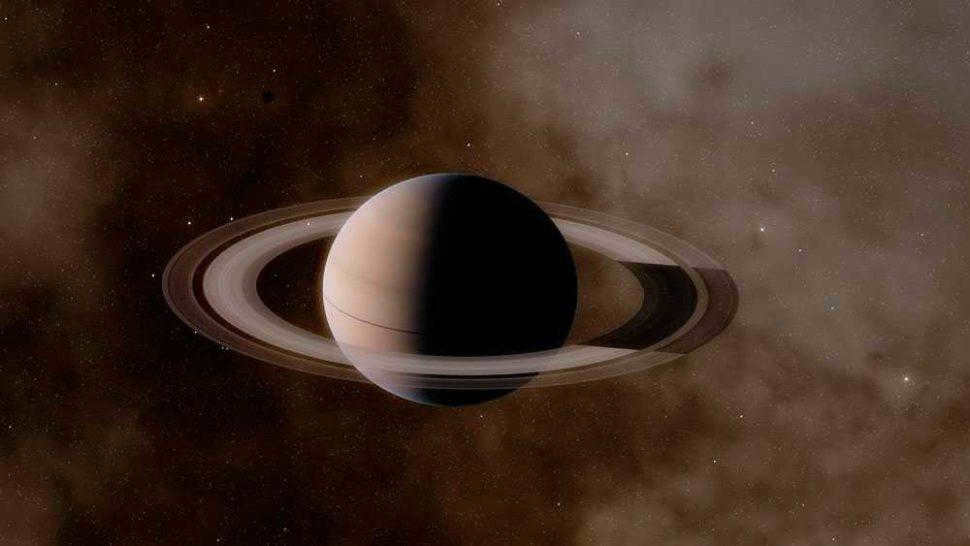
Saturn, the sixth planet in our solar system, is located between Jupiter and Uranus. What distinguishes this celestial object from others?
Rings
One of the most fascinating features of Saturn is its magnificent rings. While all giant planets possess rings, Saturn’s rings are particularly dazzling and can even be observed using a basic amateur telescope. It was the great astronomer Galileo who first laid eyes on these celestial wonders when he peered through his telescope.
Positioned precisely along Saturn’s equator, these rings are composed of 99% water ice. Despite their striking appearance, the rings are actually quite narrow, measuring less than 1 kilometer in width. The smallest ring, known as Thebes, was only discovered in 2009 and is located approximately 4 million kilometers away from the planet’s center. Comparatively, Saturn’s equatorial radius is 60,268 kilometers.
In 1921, a sensational rumor circulated in newspapers claiming that Saturn’s rings had vanished and that fragments of the rings were hurtling towards Earth. However, this was nothing more than a misunderstanding as the rings, along with Saturn itself, were simply angled away from Earth’s view during that time and were not visible.
A celestial body capable of sustaining life
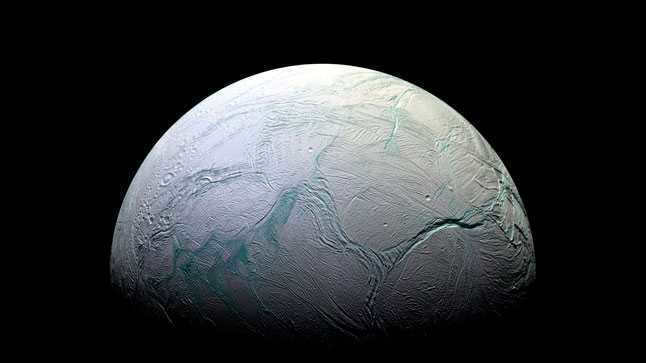

Saturn boasts the highest number of satellites among all the planets in the solar system, with a total of 82. Enceladus, in particular, has captivated the attention of contemporary scientists. This moon is enveloped in a thick layer of ice, beneath which lies an expansive water ocean. Data collected from various probes have revealed that the temperature within this ocean can plummet to 0 degrees Celsius, with the salinity levels closely resembling those found in Earth’s World Ocean. Astonishingly, in 2018, the presence of intricate macromolecules of organic matter on Enceladus was officially confirmed. This collective evidence strongly suggests the intriguing possibility of life existing on this extraordinary satellite. In fact, in 2011, it was officially announced that Enceladus possesses the most favorable conditions for supporting life in the entire solar system, second only to our very own planet Earth.
For a considerable period, it was widely accepted that no celestial entity within our solar system, apart from our own planet, possessed any form of liquid on its exterior. However, in 1995, extensive evidence emerged confirming that Titan, the most substantial moon orbiting Saturn, harbors lakes, channels, and even seas! However, it is important to note that these bodies of liquid are not comprised of water, but rather consist of hydrocarbons. Ethane, a liquid compound, accounts for approximately 76-79% of their overall composition.
The presence of liquid on Titan’s surface is primarily attributed to the fact that this moon possesses an atmosphere with a density 1.5 times greater than that of Earth. Titan is an exceptionally sizable moon, boasting a radius of 2576 km, thereby making it slightly larger than Mercury.
Saturn Lacks a Solid Surface
Saturn is considered a typical gas giant planet, consisting mainly of hydrogen (96%) and helium (3%). As a result, the majority of Saturn is comprised of its atmosphere. In the lower regions of the atmosphere, the pressure increases, causing the gases to transform into a liquid ocean. However, there is no distinct boundary between the ocean and the atmosphere, similar to Earth.
Beneath the liquid hydrogen layer, at depths where the pressure reaches 3 million atmospheres, the hydrogen becomes metallic. Below this layer of metallic hydrogen lies a small core, composed of heavy elements such as silicon and metals, which is approximately 20 times more massive than Earth.
Low density
With a composition that is 96% hydrogen, Saturn has an incredibly low density of only 687 kg/m3. In fact, this density is 1.5 times less than that of water, making Saturn the lightest planet in the entire solar system. One interesting result of Saturn’s low density is that its free-fall acceleration is nearly identical to that of Earth, despite the fact that Earth’s mass is 95 times smaller than Saturn’s.
A cloud in the shape of a hexagon
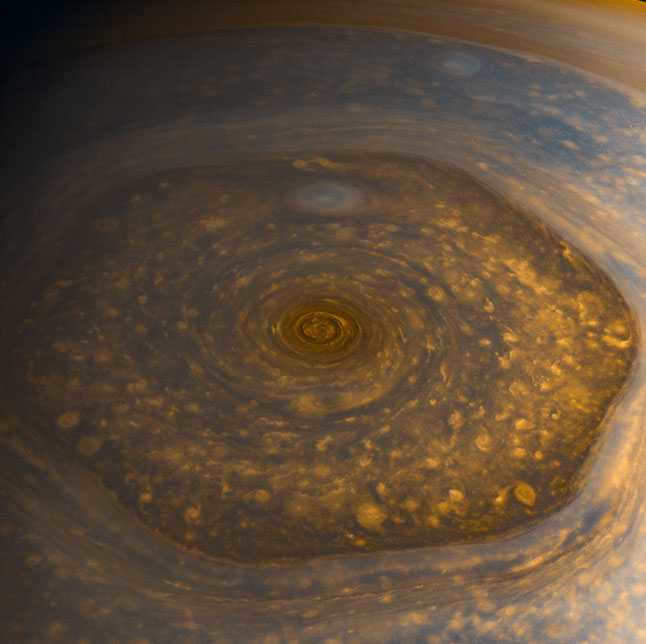
It is a familiar sight to see cyclones and anticyclones appearing in circular shapes on both Earth and other planets. However, Saturn is home to a remarkable hexagonal vortex that was first discovered in the 1980s. This unique formation has proven to be incredibly stable and continues to exist to this day. With a cross-sectional size measuring 25,000 square kilometers, it is larger than Earth itself. Situated at Saturn’s North Pole, the hexagon remains a scientific mystery, although recent advancements have allowed scientists to replicate similar microvortices in laboratory settings.
Japet, one of Saturn’s satellites, is truly unique. What sets it apart is the stark contrast between its two hemispheres. The front hemisphere, known as the leading hemisphere, shines with a brilliant white light, resembling a snowy surface. It reflects an impressive 60% of the light that hits it. In stark contrast, the trailing hemisphere is as dark as soot, reflecting a mere 3% of the light. This stark difference in reflectivity causes Japet’s brightness in the night sky to fluctuate by two star magnitudes.
The reason behind Japet’s dual nature lies in the dust that accumulates on its surface from a single direction. Despite being just a few centimeters thick, this layer of dust dramatically alters the appearance of the satellite, giving it its distinctive two-facedness.
Saturn’s shape
Due to its low density and rapid rotation, Saturn is the most oblate planet in the solar system. It completes one revolution around its axis in just 10.5 hours, resulting in its flattened shape. The equatorial radius of Saturn is 60268 km, while its polar radius is 54364 km, making it approximately 10% smaller at the poles. In comparison, the Earth only has a 0.35% difference between its polar and equatorial radii.
Rings around a Satellite
There is a belief that Rhea, one of Saturn’s moons, might possess its own set of rings. If this is true, Rhea would stand as the inaugural and solitary moon with rings. Nonetheless, there has yet to be definitive proof of their existence.
Thoroughly Investigated by the Cassini Space Probe
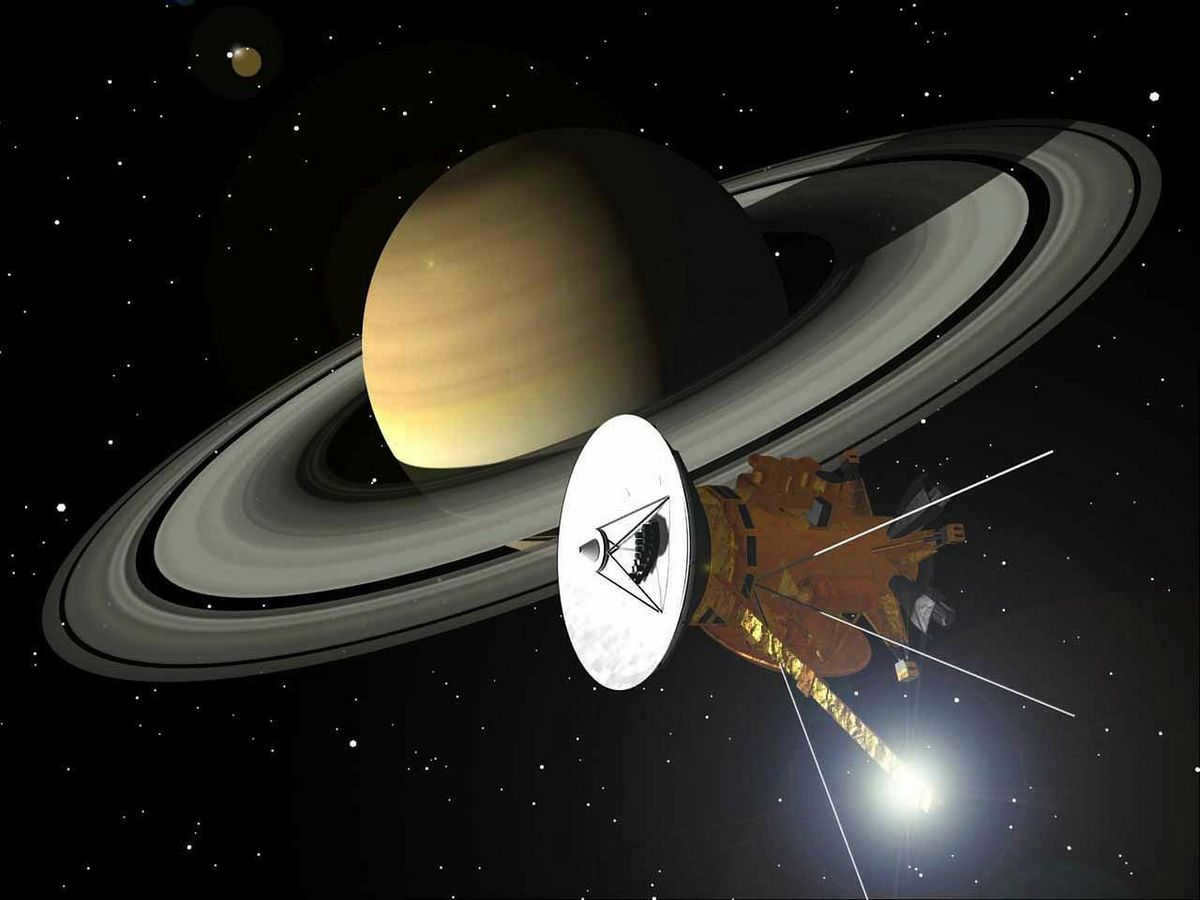
Other articles you might be interested in
References
– https://universemagazine.com/897/
– http://obshe.net/posts/id2192.html
– https://ru.wikipedia.org/wiki/Сатурн
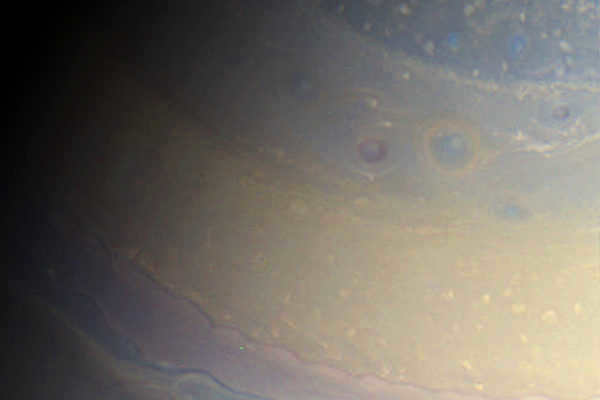
Solar System
Each planet in the solar system possesses its own distinctive characteristics. Venus, for example, is enveloped by a thick layer of pristine white clouds, while Mars is blanketed in crimson sand. Jupiter’s surface, on the other hand, is crisscrossed by dense cloud belts. However, Saturn is renowned not only for its mesmerizing rings that encircle the planet from all directions, but also for its unique coloration. Attempting to describe Saturn’s color in a single word is a challenging task, as it is an amalgamation of various hues! If Venus can be identified as white, Earth as blue, and Mars as red, what then can be said of Saturn’s true color?
Saturn appears as a radiant star in the sky. During oppositions, the planet shines brightly, only surpassed in brilliance by Sirius and Canopus. At this juncture, the color of Saturn is easily discernible, presenting itself as either a lustrous yellow or a slightly grayish yellow or even a leaden yellow. Some observers have even detected hints of blue in the planet’s hue. The planet’s disk emits a combination of white and yellow tones, while its rings contribute a touch of gray. If the rings are fully open during opposition, Saturn’s appearance shifts to a more gray or white shade, rather than yellow.
However, Saturn is not consistently luminous and vibrant. Consequently, its color may be challenging to perceive in a well-lit city due to street lighting. In such urban environments, Saturn typically appears as an ambiguous white star.
The Appearance of Saturn in Amateur Telescopes
When viewed through amateur telescopes, the color of Saturn is easily recognizable as yellow. Although photographs cannot fully capture the visual experience, take a look at how the planet appears through a small instrument.
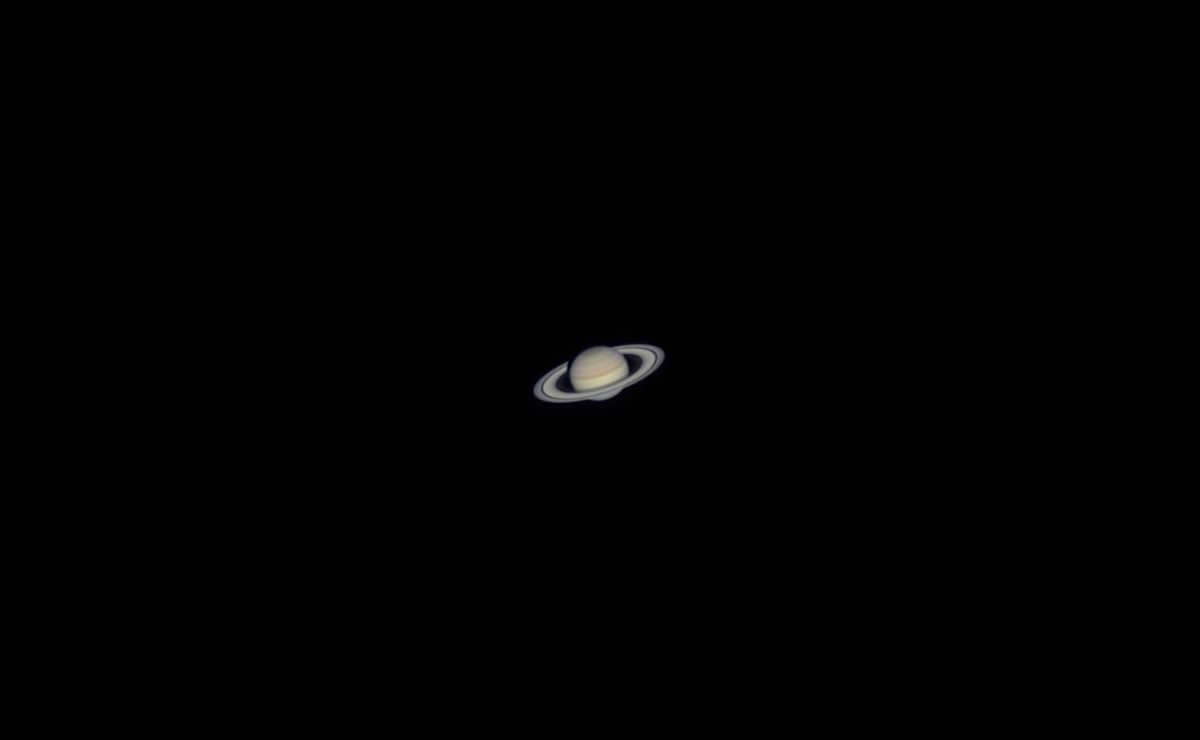
Typically, the tones perceived on Saturn bear resemblance to the coloration of Jupiter. Nevertheless, they are considerably less prominent on Saturn.

The Appearance of Saturn in Spacecraft Photographs
When examining images sent from the Voyager and Cassini spacecraft, we are able to observe the intricate structure of Saturn’s atmosphere in much greater detail. Although the overall color of the planet remains a vibrant yellow, the various cloud belts, swirls, and hurricanes can exhibit a wide range of hues, including white, blue, orange, and brown.
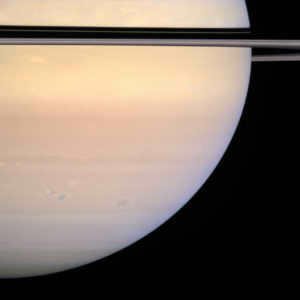

The colors seen in Saturn’s atmosphere, similar to those in Jupiter’s atmosphere, are caused by chemical impurities. Although hydrogen and helium make up 99.5% of the planet’s atmosphere, the clouds on Saturn consist of other substances. Scientists have discovered the presence of ammonia, water ice, and ammonium hydrosulfide crystals in these clouds. What causes the diverse range of colors? The yellow hues are likely attributed to ammonia and its compounds, while water and ammonium hydrosulfide are responsible for the white coloration. Red hues, on the other hand, are produced by molecules containing phosphorus. These photochemical compounds are created in the upper atmosphere through the interaction of solar ultraviolet light. Subsequently, they descend onto the clouds, imparting their vibrant colors.

The composite images displayed were generated using photographs captured by the Cassini spacecraft’s wide-angle camera from 2012 to 2016.
These two contrasting images showcase the seasonal transformation of colors in the northern polar region. In the second image, a shimmering golden hue has emerged. The immense hexagon, reminiscent of a chameleon, has now been entirely enveloped in a gilded patina. The diameter of this renowned hexagon measures 32,000 kilometers. It is worth noting that the wind speeds within this colossal vortex reach a staggering 322 km/h.
“The Cassini mission scientists have reported that they are currently investigating the potential causes behind the alteration in color within Saturn’s hexagon region. They believe that this phenomenon may be linked to the shifting seasons on the gas planet. It is possible that during specific periods, there is an influx of certain gases in Saturn’s atmosphere, resulting in a change in the color of this particular area.”
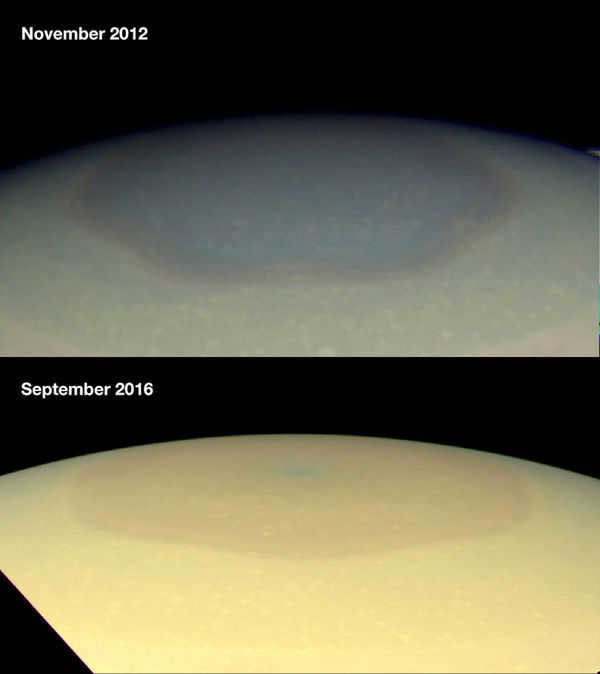
14.9K posts 45.3K subscribers
Community Guidelines
What guidelines can there be here, except the guidelines set by the peekaboo itself 🙂
That’s what a life-giving light filter does.
It is evident that autumn has arrived on Saturn, causing everything to turn yellow and resulting in a lack of light and chlorophyll production.
I am curious about the speed of data transmission from Saturn to us. After all, the equipment on the spacecraft sent to faraway places becomes outdated by the time it reaches its destination. Of course, they use the best technology available at the time, but still. For instance, how long does it take to send a 2MP picture?
It’s a thaw. Warming up on Saturn.

Saturn will be visible on August 6, 2023, at 11:26 pm.
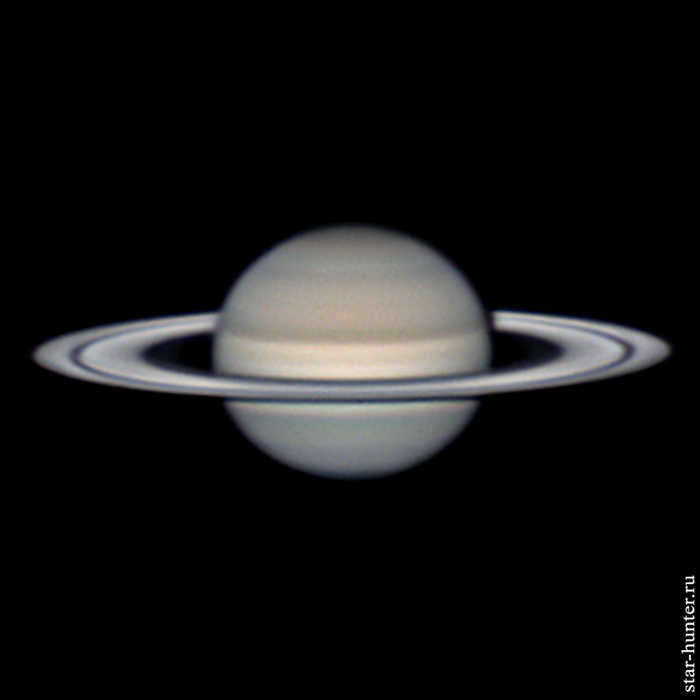
My equipment for capturing this stunning image of Saturn on August 6, 2023 at 23:26 included the Sky-Watcher Dob 14 (350/1600) Retractable SynScan GOTO telescope, the Lensblock Barlow NPZ PAG 3-5x, the atmospheric dispersion corrector ZWO ADC, a dispersion sleeve, the ZWO IR-cut light filter, and the astronomical camera ZWO ASI 183MC. This photo was taken at the Caucasus Mountain Observatory, Moscow State University, in the Karachay-Cherkess Republic.
What is the reason behind the youthfulness of Saturn’s rings? When did they come into existence and when will they disappear?
Since the time when Galileo first observed Saturn’s rings through his telescope and, for some strange reason, referred to them as “ears”, humanity has been captivated by the magnificence of this celestial jewelry. However, when we consider their age in the context of cosmic time, we must acknowledge our good fortune in being able to witness this extraordinary spectacle. It is quite possible that these rings are younger than the dinosaurs themselves. How is it possible that they are a relatively recent addition to the celestial body they encircle? Let us delve into this mystery and attempt to unravel its secrets.
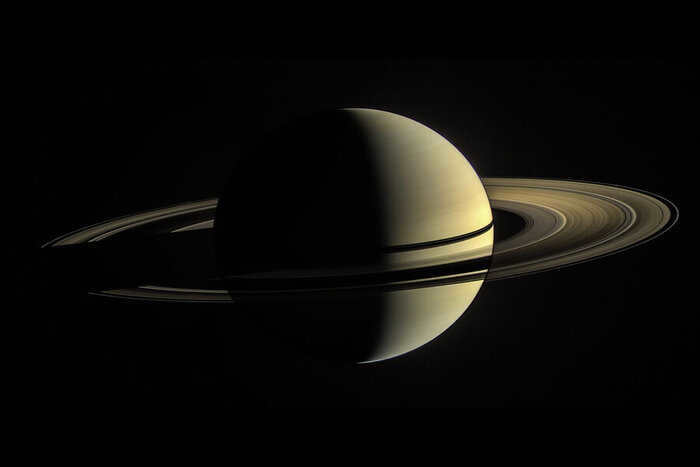
Scientists have not yet reached a final consensus on the origins of Saturn’s rings, but the prevailing hypothesis suggests that they are remnants of a frozen moon known as “Chrysalis”. This moon gradually approached the planet over a long period of time and eventually crossed the Roche limit, causing it to break apart into billions of pieces.
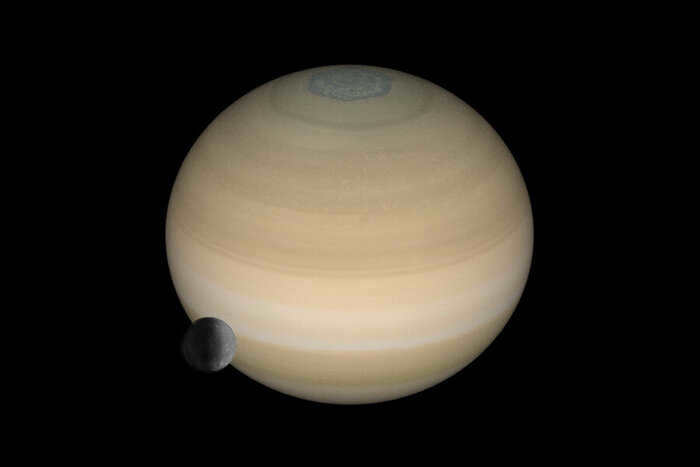

An artist’s depiction of Saturn without rings, featuring the satellite Chrysalis
One method for determining the age of the rings involves estimating the shine of the particles that compose them. From a distance, they may appear solid, but they are actually made up mostly of ice and rocks. Over time, these particles would have started to accumulate cosmic dust, which means that in order to estimate their age, scientists need to assess their level of dirtiness. It’s almost like determining the last time a room was cleaned based on the layer of dust on a table or shelf. In May 2023, the findings of a study were published, in which the authors analyzed the data collected by the automated interplanetary spacecraft “Cassini” and narrowed down the potential age of Saturn’s rings to 100-400 million years. The researchers specifically examined the particles that the spacecraft meticulously gathered.
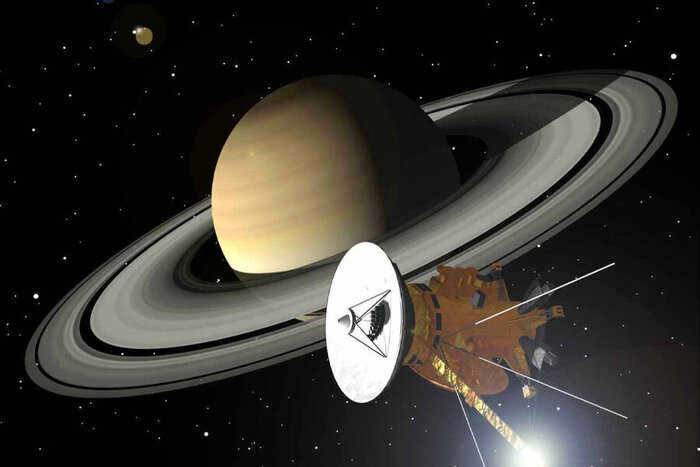
Cassini interplanetary station near Saturn. Illustration
What was happening on Earth during this period? 400 million years ago, the earliest tetrapods inhabited the planet, while mammals and dinosaurs already existed 100 million years ago. Therefore, it is likely that the age of Saturn’s rings is closer to the former estimate. Additional research will be required to confirm the exact dating.
However, it’s not only the youthfulness of the rings that is remarkable. Evidently, they are also susceptible to imminent disappearance. Their continuous interaction with the magnetic field of the gas giant ultimately causes them to descend into the planet’s atmosphere. With no means of replenishment available, this process is finite. Based on current projections, the rings have a lifespan of 300 million years. When considering that Saturn itself is approximately 4.5 billion years old, it becomes apparent that its splendid disk is a rather transient embellishment. All things considered, we are truly fortunate to witness this spectacle firsthand.
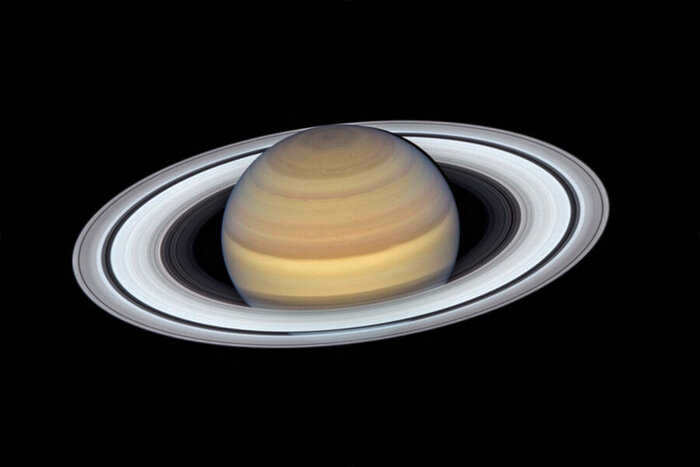
It’s important to note that rings can also be found around other planets, but they are much fainter and not visible through a basic telescope. These planets include Jupiter, Uranus, and Neptune. Scientists have even discovered rings around smaller celestial bodies such as Haumea, Quavar, and Chiron.
We appreciate your attention! If you enjoyed the article, you can show your support with a “thumbs up” or subscribe to our channel. Additionally, we’d like to mention that we have our own Telegram channel where we regularly share fascinating posts about space and astronomy.

The time is 23:11 on August 3, 2023, and we are currently located in the constellation of Orion in the Milky Way galaxy.
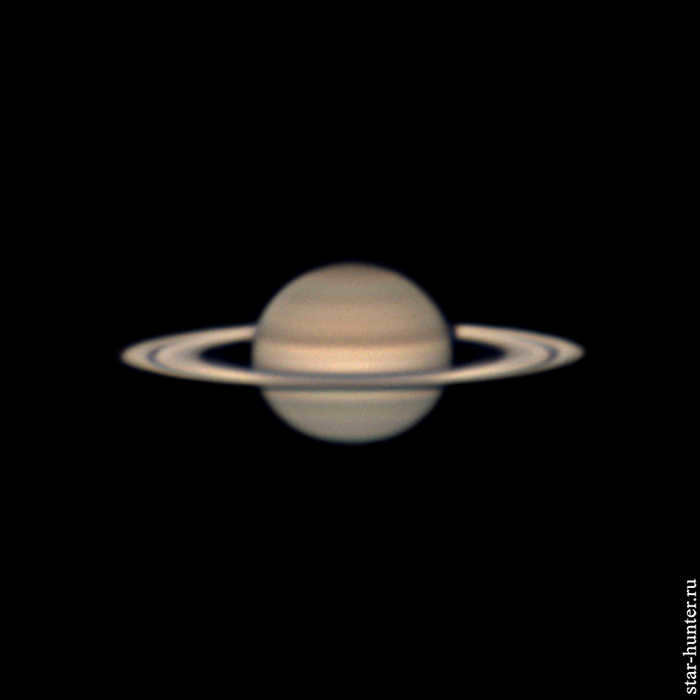
The following equipment was used:
-Sky-Watcher Dob 12″ Retractable SynScan GOTO telescope
-Lens Barlow Refinery PAG 3-5x.
-atmospheric dispersion corrector ZWO ADC
-ZWO IR-cut filter
-astronomical camera ZWO ASI 183MC.
The photo was taken from Varvarovka, Krasnodar Territory, at the “Skalisty Bereg” winery.

The size of Enceladus, the sixth largest moon of Saturn, can be measured by its surface area
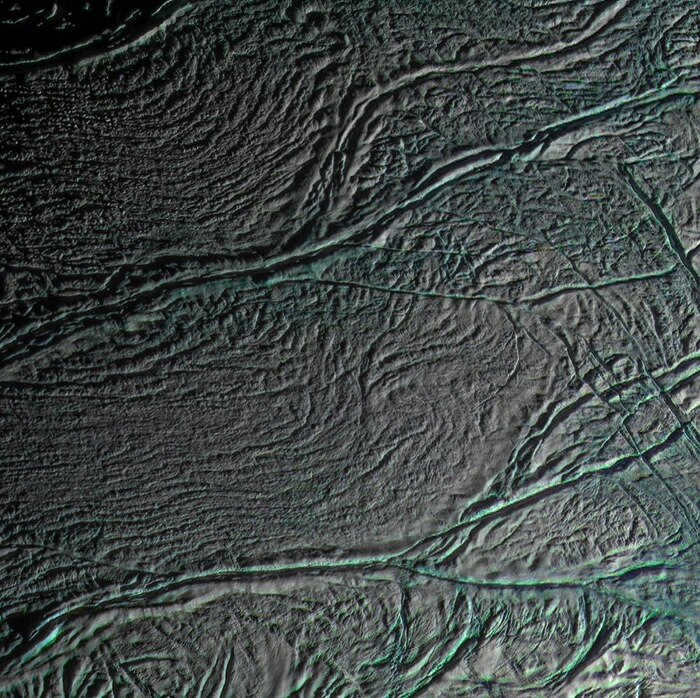
The photograph was captured on August 11, 2008 by the Cassini spacecraft, employing a combination of infrared, green, and ultraviolet filters. The image was processed by Kevin M. Gill.

The final image captured by the Cassini spacecraft during its descent towards Saturn

Discovering the gas giants of our solar system with the James Webb telescope.
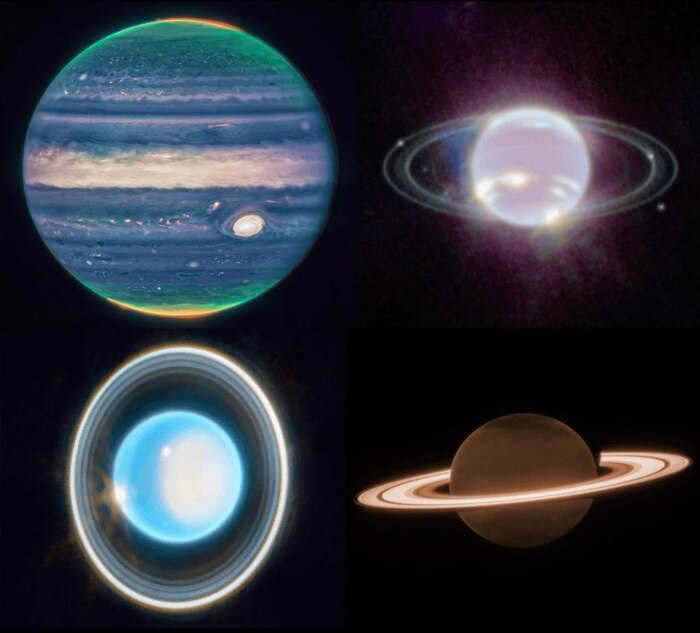
Voyagers’ Perspective: Unveiling the Universe through Captivating Images and Astounding Discoveries
The Voyager program, a monumental space exploration initiative of the 20th century, has granted the world an abundance of groundbreaking discoveries and mesmerizing images of the gas giants and their celestial companions within the Solar System.
In pursuit of this mission, scientists launched two spacecraft, Voyager 1 and Voyager 2, in August and September of 1977, respectively. The inaugural Voyager, Voyager 2, embarked on its interstellar journey, followed by Voyager 1, a mere 16 days later. The sequential numbering of the probes was determined based on their projected arrival at Jupiter and Saturn. While Voyager 2 took a longer route to reach these planets, it afforded the probe the opportunity to venture to Uranus and Neptune as well.
The image was captured by Voyager-2 on June 25, 1979 when it was 12 million km away.
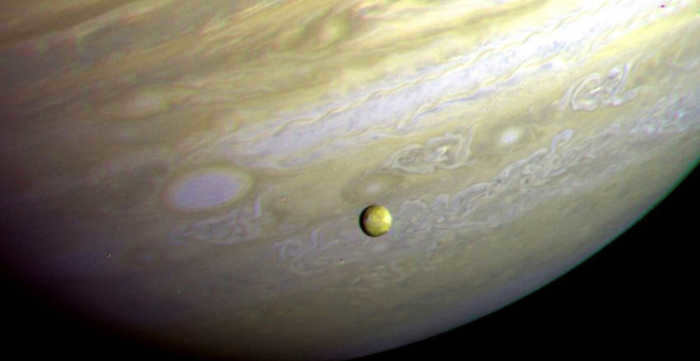
This image captures the southern hemisphere of Jupiter and its moon Io, which is one of the four Galilean satellites orbiting the planet in close proximity.
Thanks to the Voyagers, scientists have gained knowledge that Jupiter’s magnetosphere is mainly composed of the plasma from Io, a small moon. The magnetosphere absorbs gas emissions that are released from volcanic eruptions on Io’s surface. The heavier volcanic products, like sulfur, remain on Io’s surface, while the lighter ones, like oxygen, ascend and disperse into space, creating a gas torus in orbit. Components of this torus get trapped in Jupiter’s magnetic field, causing the magnetosphere of the gas giant to expand and increase in size by almost double.
Voyager 2’s discoveries revealed that Jupiter’s magnetosphere can even reach as far as Saturn’s orbit, making it the largest magnetosphere among all the planets in the solar system.
A collection of pictures captured by Voyager 1 during its close encounter with Io, a moon of Jupiter, from a distance of 20,000 km, has been arranged into a mosaic to reveal the moon’s surface. The images depict vast volcanic plains that cover the moon’s terrain.
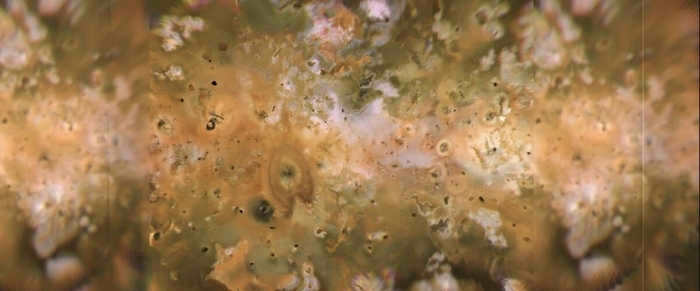
In 1979, Voyager 1 made a flyby of Io and captured a series of photographs of the moon. Upon examining the images, scientists observed a vibrant and diverse landscape on Io’s surface, which appeared to be relatively young due to the absence of impact craters. Additionally, they discovered that the moon’s surface is mainly composed of smooth plains, interspersed with towering mountains and peculiar pits that turned out to be lava flows. A thorough analysis of the images revealed that Io is a volcanically active world, with an estimated 400 active volcanoes.
This particular image, taken by Voyager 1 in November 1980 from a distance of 435,000 kilometers, showcases the dense atmospheric haze enveloping Titan, Saturn’s largest moon.
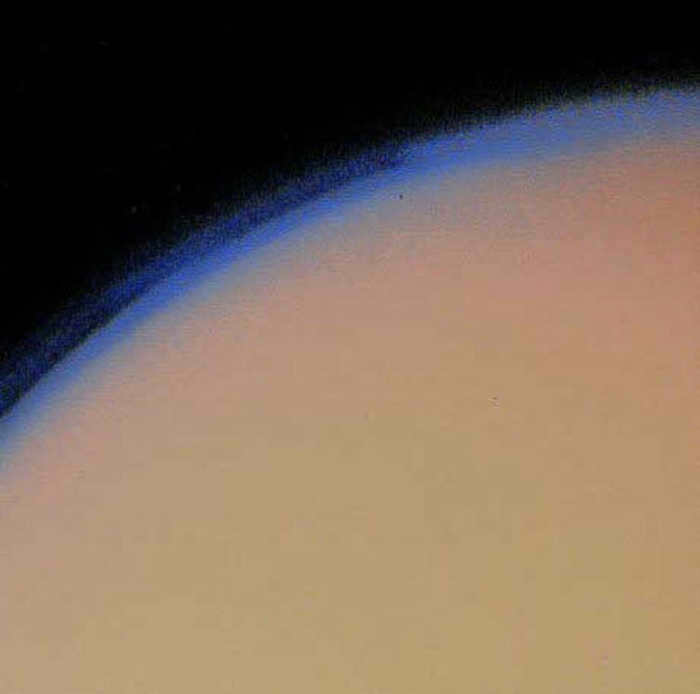
The instruments of the probe revealed that Titan is covered in a mist that blends with a layer of clouds above the northern pole of the moon and completely conceals its surface. During its approach to Titan, the probe made the remarkable discovery that this moon possesses an atmosphere that is denser than that of Earth.
In this photograph, Enceladus can be seen as one of Saturn’s eighty-two satellites. This particular image was captured by Voyager 2 in 1981 from a distance of 112,000 kilometers.
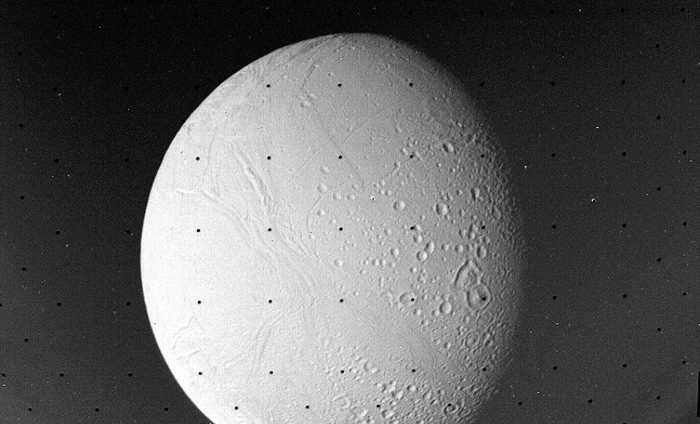
The moon of the gas giant has remained an enigma to scientists until it was explored by the Voyagers. The spacecrafts determined that Enceladus has a diameter of nearly 500 km and discovered that the moon’s surface is extremely diverse. There are regions on Enceladus with a high concentration of craters, while other areas have almost no impact formations. Subsequently, experts hypothesized that the crater-less regions are not true craters; instead, they are likely filled with material expelled during geological activity over time.
Additionally, the instruments on the probes have revealed that the satellite’s orbit traverses a relatively narrow and dense portion of Saturn’s E-ring, suggesting that the ring may be composed of material ejected from the surface of Enceladus.
In 1986, the Uranus ring system was observed by the Voyager 2 probe. The accompanying photograph displays the first nine rings, which appear as dark lines contrasting with the planet’s bright clouds. The most prominent ring, Epsilon, is located on the right side of the image, while three barely discernible rings are visible on the left side and are simply labeled as numbers 4, 5, and 6.


Thanks to the data collected by the spacecraft, researchers have made an exciting revelation: two additional rings have been found around Saturn, bringing the total number of known rings to eleven. The initial nine rings were identified in 1977 by the renowned American astronomer James Elliot, while two more were discovered by the Hubble Telescope in 2003. As of 2021, Uranus is known to have thirteen rings encircling it.
In 2016, scientists examining archived data from Voyager-2 made another significant discovery: two previously unidentified moons orbiting Uranus. With this finding, the total number of moons revolving around this colossal planet now stands at twenty-nine.
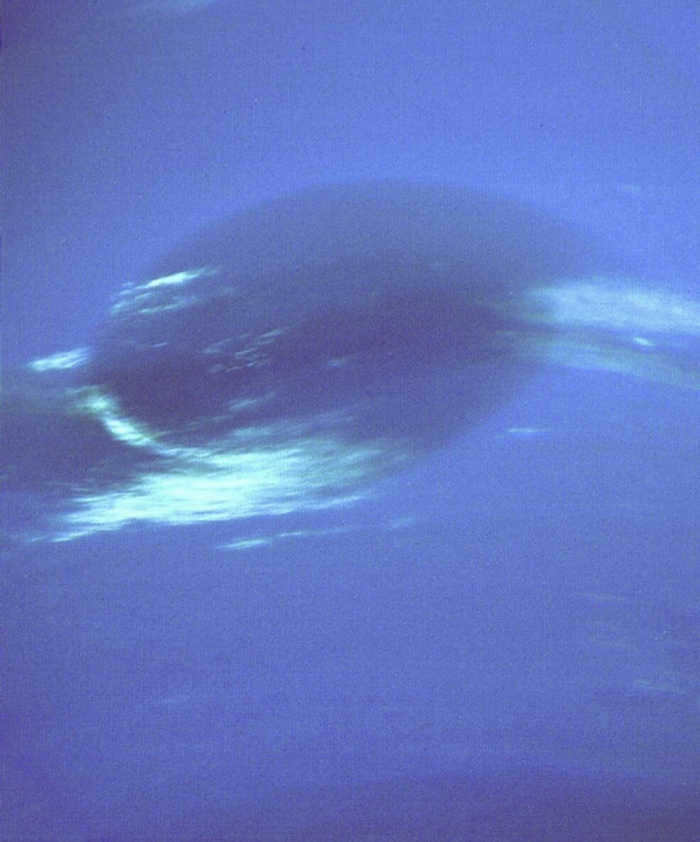
Image: NASA/JPL / Great Dark Spot
The probe captured two atmospheric phenomena on Neptune in 1989: the Small and Large Dark Spots. Scientists believe that these entities are actually anticyclones. Powerful winds can circulate around these spots, with speeds that may surpass the speed of sound, according to certain data.
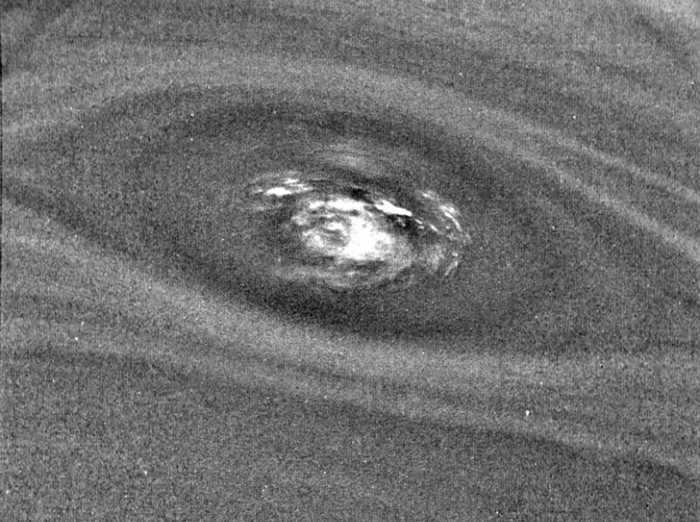
Photo: NASA / JPL / Small Dark Spot
In 1994, Hubble attempted to capture photos of the spots, but they were found to have vanished. Presently, experts are observing a new massive spot in Neptune’s atmosphere, which recently emerged – the Northern Great Dark Spot.
Give a thumbs up to discover more articles about space and science in your feed!
And if you’re craving for more, check out my space Telegram channel, where all the excitement happens).CosmoVision
The planet Saturn is renowned and captivating within the solar system. It is universally known for its distinctive rings, even among those unaware of other planets such as Uranus or Neptune.
Arguably, Saturn’s fame stems from astrology, but it also holds significant scientific significance. Both amateur and professional astronomers are drawn to observing this stunning planet due to its easy visibility and captivating appearance.
Interesting facts about Saturn
Saturn, a planet of extraordinary size and uniqueness, possesses several remarkable characteristics. With its numerous satellites and expansive rings, Saturn resembles a miniature solar system, brimming with captivating aspects. Below, you will find some intriguing facts about Saturn:
- Saturn is positioned as the sixth planet from the Sun, and has been the last planet to be identified since ancient times. Subsequent planets, such as Uranus and Neptune, were only discovered with the aid of advanced telescopes and precise calculations.
- After Jupiter, Saturn holds the distinction of being the second largest planet within our solar system. It is also categorized as a gas giant, devoid of any solid surface.
- The average density of Saturn is less than half that of water. If placed in an enormous swimming pool, Saturn would effortlessly float, resembling the buoyancy of Styrofoam.
- Due to its inclination relative to the plane of its orbit, Saturn experiences changing seasons, each lasting approximately 7 years.
- Saturn currently has a total of 62 satellites, but this count is subject to change as more discoveries are made. Only Jupiter surpasses Saturn in terms of satellite count. Update: As of October 7, 2019, the number of known satellites around Saturn has increased by 20, bringing the total to 82, surpassing Jupiter by 3. Saturn now holds the record for the highest number of satellites.
- Titan, one of Saturn’s satellites, ranks as the second largest in the entire solar system, second only to Ganymede, a satellite of Jupiter. Titan is approximately 50% larger than our Moon and even slightly larger than Mercury.
- There is a possibility that Enceladus, another one of Saturn’s satellites, harbors a subglacial ocean. Scientists speculate that this icy moon may potentially be home to some form of organic life.
- Unlike a perfect sphere, Saturn has a non-spherical shape due to its rapid rotation, with a day lasting less than 11 hours. This causes the planet to have a flattened shape at its poles.
- Saturn emits more energy than it receives from the Sun, just like Jupiter.
- The wind speeds on Saturn can reach up to 1800 m/s, which is greater than the speed of sound.
- Saturn doesn’t have a solid surface. As you go deeper, the gas, mostly hydrogen and helium, becomes thicker until it turns into liquid and then metallic.
- There is a peculiar hexagonal formation at the poles of Saturn.
- Auroras can be observed on Saturn.
- Saturn’s magnetic field is one of the strongest in the Solar System, extending a million kilometers from the planet. There are dangerous radiation belts near the planet that can harm the electronics of space probes.
- A year on Saturn lasts 29.5 years, which is the time it takes for the planet to complete a revolution around the Sun.
Undoubtedly, there are numerous fascinating facts about Saturn that have yet to be explored due to the planet’s vast and intricate nature.
Distinctive Qualities of Saturn
In the captivating film “Saturn – Lord of the Rings,” which is highly recommended for viewing, the narrator aptly states, “If there is a planet that embodies the magnificence, enigma, and terror of the cosmos, it is Saturn.” This statement holds true.
Saturn is truly magnificent, with its colossal size and the awe-inspiring presence of its iconic rings. It remains mysterious, as many of the phenomena occurring on the planet are still beyond our comprehension. Additionally, Saturn can be deemed as terrifying, as it experiences phenomena that are unimaginable to us, such as winds reaching speeds of up to 1800 m/s, thunderstorms hundreds and thousands of times more powerful than those on Earth, helium rain, and much more.
Saturn, the second largest planet after Jupiter, is a colossal celestial body with a diameter of 120,000 kilometers, slightly smaller than Jupiter’s 143,000 kilometers. In fact, Saturn is 9.4 times larger than Earth and has the capacity to accommodate a staggering 763 planets like our own.
Despite its massive size, Saturn is surprisingly lightweight. This is due to its low density, which is even less than that of water. The majority of Saturn’s composition consists of light elements such as hydrogen and helium. If we were to hypothetically place Saturn in an enormous swimming pool, it would actually float rather than sink! In fact, Saturn’s density is a mere eighth of Earth’s. The planet with the second lowest density in the solar system is Uranus, which also happens to be the coldest planet.
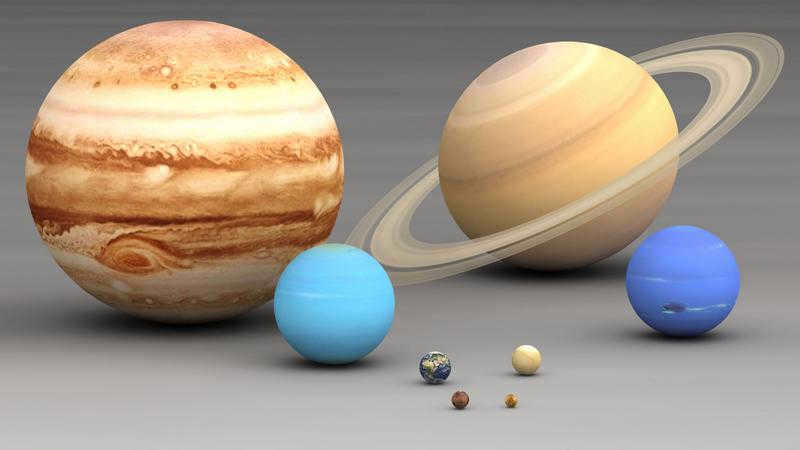
The Comparative sizes of the planets
Even though Saturn is incredibly large, its gravity is only 91% of Earth’s, despite having a total mass 95 times greater than Earth’s. If we were actually on Saturn, we wouldn’t notice much of a difference in gravity, unless we ignore the other factors that would surely result in our demise.
Despite its massive size, Saturn actually rotates around its axis much faster than Earth does – a day on Saturn lasts anywhere from 10 hours and 39 minutes to 10 hours and 46 minutes. This discrepancy is due to the fact that Saturn’s upper layers are mostly composed of gas, causing it to rotate at various speeds across different latitudes.
Saturn’s Moons
As of now, Saturn boasts an impressive collection of 82 moons, each with its own unique size and characteristics. This number surpasses all other planets in our solar system, including Jupiter by a margin of 3. In fact, Saturn claims 40% of all known moons in our solar system, solidifying its status as a celestial record-breaker. On October 7, 2019, a team of scientists made an astonishing discovery, adding 20 new moons to Saturn’s ever-growing satellite family. Prior to this groundbreaking finding, only 62 moons were officially recognized.
Among Saturn’s many moons, one stands out as one of the largest in the entire solar system – Titan. Second in size only to Ganymede, Titan is nearly twice the size of Earth’s Moon and even surpasses the dimensions of Mercury, albeit smaller than Mars. What sets Titan apart from the rest is its distinctive atmosphere, composed primarily of nitrogen along with traces of methane and other gases. The atmospheric pressure on Titan’s surface is one and a half times greater than that of Earth, despite its significantly lower gravity, measuring just 1/7th of Earth’s.
Titan is known for being the biggest producer of hydrocarbons. It boasts an abundance of liquid methane and ethane, forming rivers and lakes. Moreover, cryogeysers are present on this moon, giving it a resemblance to Earth during its early stages. The potential for discovering primitive life forms on Titan is not out of the question. Interestingly, Titan is the only moon that has had a lander, the Huygens, successfully touch down on its surface on January 14, 2005.
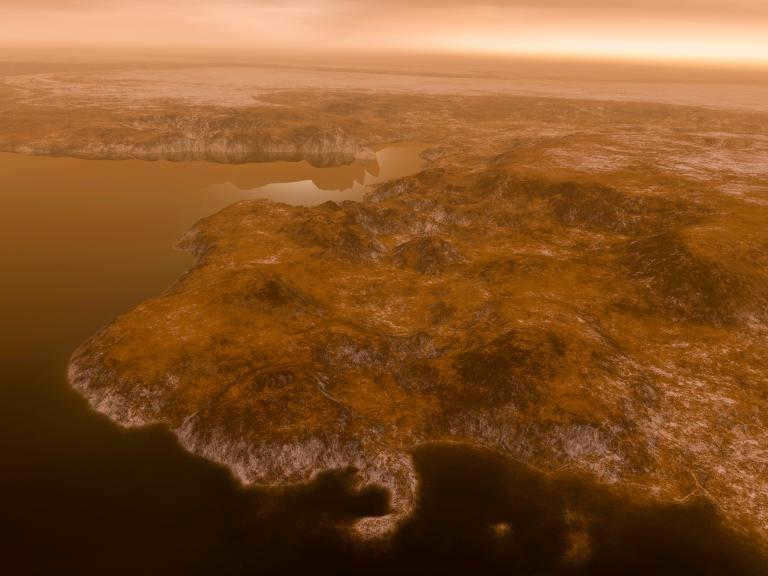
These perspectives on Titan, a Saturnian satellite.
Enceladus, Saturn’s sixth largest moon with a diameter of about 500 km, holds a special allure for exploration. It stands out as one of the trio of moons known for their active volcanic activity, the other two being Io and Triton. Enceladus boasts a multitude of cryogeysers that propel water to great heights. It is possible that Saturn’s gravitational forces generate sufficient energy within the moon’s core to maintain liquid water.
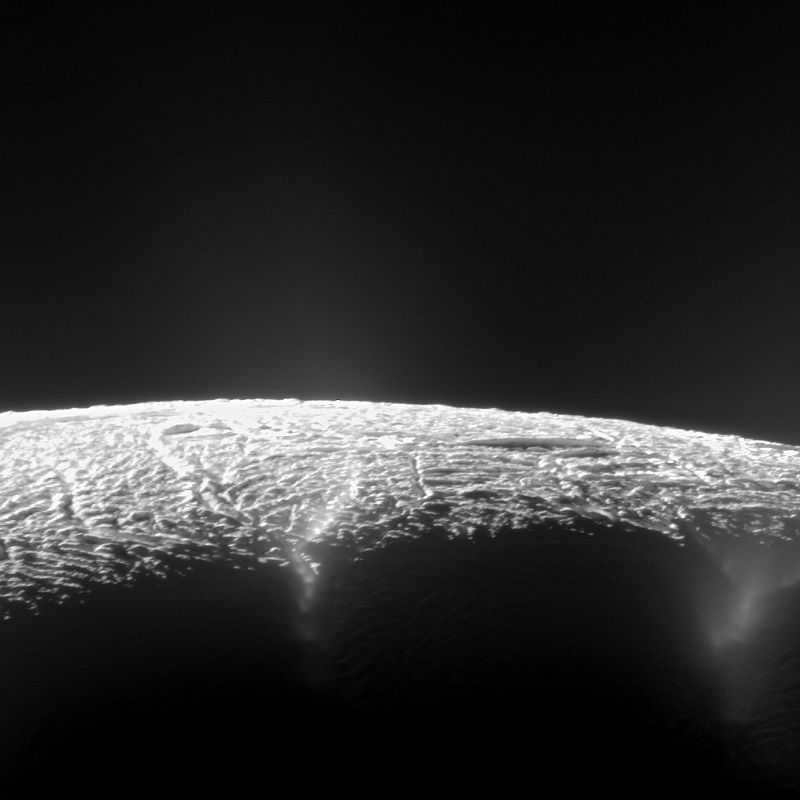
The Cassini spacecraft captured an image of the geysers on Enceladus.
Europa and Ganymede, two of Jupiter’s moons, may also have subsurface oceans. Enceladus, which orbits in the F ring, releases water that contributes to the formation of this ring.
Aside from Enceladus, Saturn has several other large moons including Rhea, Japetus, Dione, and Tefia. These moons were some of the first to be discovered due to their size and visibility even with faint telescopes. Each of these moons offers its own unique characteristics and qualities.
Saturn’s renowned ring system
The iconic ring system of Saturn is what sets this planet apart and contributes to its widespread recognition. It’s difficult to envision Saturn without its magnificent rings, as it would appear as a bland, pale sphere.
Which other planet boasts a ring system resembling Saturn’s? None within our solar system possess such a feature, although other gas giants like Jupiter, Uranus, and Neptune do have rings. However, these rings are much thinner and sparser, and they cannot be observed from Earth. In contrast, Saturn’s rings are easily visible even with a modest telescope.
The rings were initially observed by Galileo Galilei in 1610 using his homemade telescope. However, what he witnessed were not the rings as we know them today. They appeared as two peculiar spherical objects on either side of the planet – the image resolution of Galileo’s 20x telescope was inadequate, leading him to believe that he was viewing two massive satellites. Two years later, when he once again observed Saturn, he did not encounter these formations, which left him thoroughly perplexed.
The size of the ring in various references is stated with slight variations – approximately 280 thousand kilometers. The ring is not a solid structure, but rather comprises multiple narrower rings separated by gaps of varying widths, ranging from tens to hundreds of kilometers. Each ring is designated with a letter, while the gaps are referred to as slits and possess specific names. The most significant gap can be observed between rings A and B, known as the Cassini gap, which is visible through a non-professional telescope and measures 4700 kilometers in width.
The appearance of Saturn’s rings can be deceiving, as they are not solid structures. Rather than being a single disk, the rings are composed of numerous small particles that orbit around the planet’s equator. These particles vary in size, ranging from tiny specks of dust to larger rocks and blocks that can be several tens of meters in diameter. The main component of these particles is ordinary water ice. Due to the high reflectivity, or albedo, of ice, the rings are highly visible even though they are only about a kilometer thick at their thickest point.
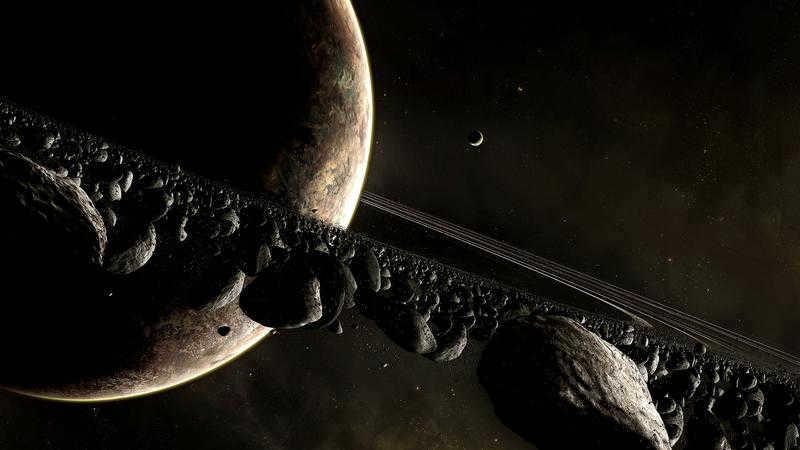
As Saturn and Earth orbit the Sun, we witness the gradual expansion and eventual disappearance of its rings, a phenomenon that occurs every 7 years. This is attributed to the tilt of Saturn’s axis, causing the rings to be positioned strictly along the equator.
Interestingly, this is why Galileo was unable to discover Saturn’s rings in 1612. At that time, they were positioned “edge-on” to Earth, making them nearly impossible to observe from such a great distance, especially considering their thickness of just one kilometer.
The origin of Saturn’s rings remains unknown, and there are several theories surrounding their formation:
- The rings were formed during the planet’s birth and have remained unused building material.
- At a certain moment, Saturn encountered a massive object which ultimately disintegrated, resulting in the formation of its rings.
- In the past, Saturn had multiple substantial moons, such as Titan, circling around it. As time passed, their orbit gradually transformed into a spiral trajectory, bringing them closer to the planet and their inevitable destruction. As these moons approached Saturn, they disintegrated, producing a significant amount of debris. This debris remained in orbit, constantly colliding and breaking apart, eventually giving rise to the rings that are visible today.
Additional investigation will determine which account is accurate. Nevertheless, it is evident that the presence of rings around Saturn is ephemeral. Eventually, the planet will assimilate all of their substance – the fragments will descend from their orbit and descend upon it. If the rings are deprived of material, they will gradually diminish until they completely vanish. Naturally, this process will not occur within a span of one million years.
Observing Saturn with a Telescope
When looking at the night sky, Saturn can be easily spotted as a relatively bright star in the southern direction. Even with a small amateur telescope, you can observe this magnificent planet. The best time to do this is during oppositions, which occur once a year. At these times, Saturn appears as a star with a magnitude of 0 and has an angular size of 18″. Here are some upcoming opposition dates:
- June 15, 2017.
- June 27, 2018.
- July 9, 2019.
- July 20, 2020.
During these oppositions, Saturn’s brightness surpasses even that of Jupiter, despite being much farther away. The rings of Saturn reflect a significant amount of light, contributing to the overall brightness of the planet.
Even with binoculars, it is possible to observe the rings of Saturn, although it may require some effort to differentiate them. However, with a telescope ranging from 60-70 mm, one can observe the planet’s disk, its rings, and even the shadow cast upon the rings by the planet. While it may be challenging to discern certain details, a clear view of the Cassini slit can be obtained when the rings are well-positioned.
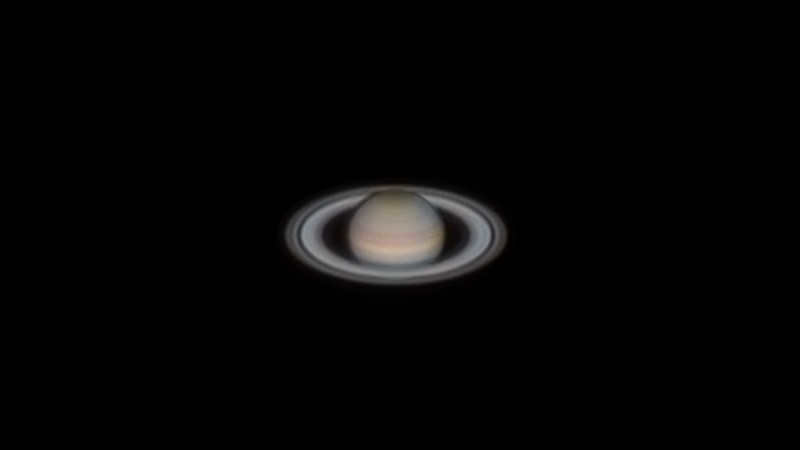
One of the amateur photographs depicts Saturn, taken with a 150 mm Synta BK P150750 reflector telescope.
To observe certain details on Saturn’s disk, a telescope with an aperture of at least 100 mm is required. For more serious observations, a minimum aperture of 200 mm is recommended. With such a telescope, one can observe not only the planet’s cloud belts and spots on its disk, but also various details within its rings.
The two brightest satellites of Saturn are Titan and Rhea, which can be observed using 8x binoculars, although a 60-70 mm telescope would provide better results. The other major satellites are less bright, ranging from 9.5 to 11 in magnitude. To observe these satellites, a telescope with an aperture of 90 mm or larger is necessary.
To enhance the observation experience, it is advantageous to possess a collection of color filters that can effectively accentuate various aspects. For instance, the utilization of dark yellow and orange filters can aid in discerning finer details within the planet’s belts, while the application of a green filter can bring out more intricate features at the planet’s poles. Furthermore, the use of a blue filter can provide enhanced visibility of the planet’s rings.
Presently, we highly recommend indulging in an enthralling film centered around the captivating planet Saturn.
Based on the most recent information, our solar system consists of 8 planets: Mercury, Venus, Earth, Mars, and gas giants – Jupiter, Saturn, Uranus, and Neptune. These planets are categorized into two groups based on their physical and other attributes: terrestrial planets and gas giants. In this article, we will focus on Saturn and its vibrant rings.
Why is the color spectrum important?
The color spectrum plays a crucial role in understanding the composition of Saturn’s rings, as demonstrated by the Cassini-Huygens spacecraft. Launched in October 1997, this spacecraft captured stunning images of Saturn and its equatorial rings using ultraviolet light. These images were then analyzed by a computer which translated the different wavelengths into distinct colors.
One fascinating discovery made through this analysis was the presence of a bright red color in the Enke division, the gap between the rings. This red color is caused by interstellar gas shining through the gap and is indicative of the presence of silicates, or rocks, that make up the ring.
Additionally, the blue and cyan colors observed in the images are attributed to ice particles. The use of artificially composed colors allows scientists to gather information about the size of the particles within the rings. For example, magenta represents particles with a diameter of less than 5 cm, while green and blue represent particles measuring 1-5 cm and less than 1 cm, respectively.
By studying the color spectrum of Saturn’s rings, scientists can gain valuable insights into the composition and characteristics of these celestial structures. Furthermore, the use of infrared light in spectrographs helps to precisely define the boundaries of the rings in the images.
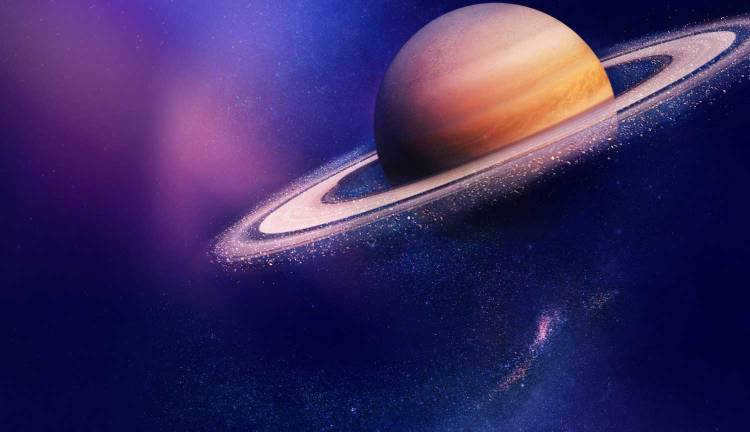
Distinctive spectral phenomena
When observing Saturn, astronomers have noticed a fascinating phenomenon – a change in the wavelengths of its spectrum at the rings. This discovery not only confirms the planet’s rotation, but also reveals the intricate movements of ice and rock masses within its rings. Interestingly, the inner rings of Saturn move at a faster pace compared to the outer rings. This unique ring structure was first identified by J. Keeler back in 1895. Another interesting observation is the significant variation in brightness of both the rings and the planet itself. Surprisingly, this change in brightness occurs in the opposite direction to the Sun within a 1° angle. From the point of opposition, the brightness of Saturn increases by an impressive 30%. Furthermore, the presence of large particles, which are larger than the wavelength of light, has a noticeable impact on the overall appearance of Saturn. These particles not only cast shadows, but also scatter light, creating a mesmerizing effect. This phenomenon is known as the Doppler-Fiso effect. Additionally, it is worth noting that there is a velocity difference of almost 6 km per second between rings A and B.
What is the main point.
Therefore, certain rings, such as the slit of Cassini, lack particles, whereas other interlocked rings contain a dense population of sizable particles that block sunlight. Scientists and astronomers have made progress in elucidating the reason behind the colored appearance of Saturn’s ring structures. The beige shade is responsible for the color of both the planet and its rings (the particles in the rings are coated with ice or frost).
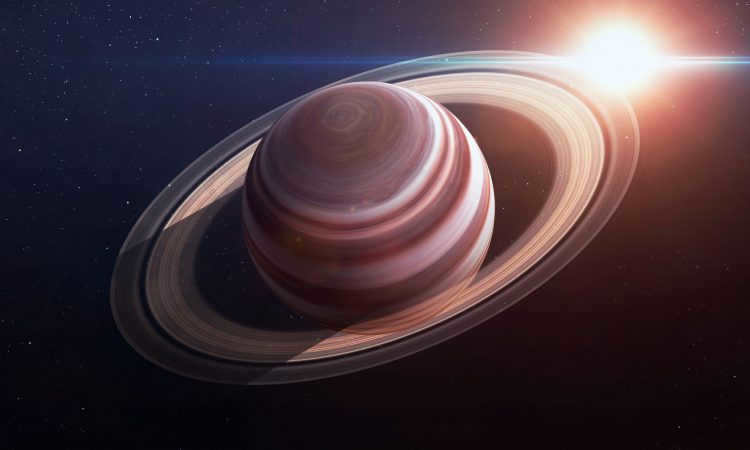
Recent discoveries
Recent studies have revealed that Saturn, aside from its remarkable rings, boasts over 60 moons. There is a strong belief that these moons and rings are interconnected. NASA experts theorize that the moons were formed from ring material through volcanic activity and other natural phenomena. Initially, the moons had a low density, but over time, the ring material gradually accumulated around their dense cores. This process accounts for the peculiar shapes observed in some of the moons.
During its journey to Saturn, the Cassini probe extensively examined the composition of five of its moons. Based on NASA’s findings, the varying colors of the moons can be attributed to their respective positions and distances from the rings.





